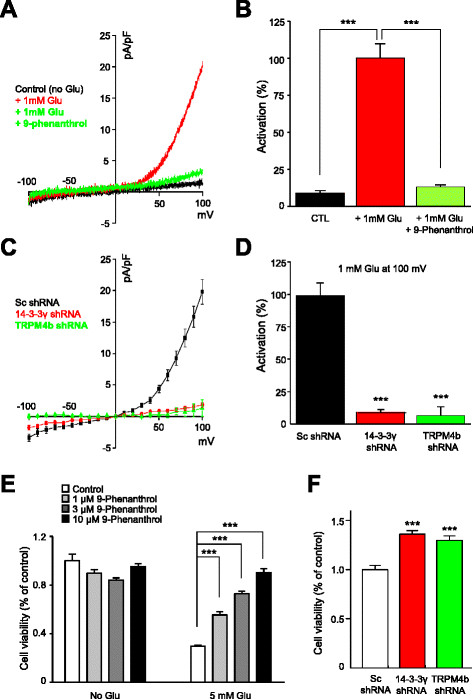Figure 5.

Inhibition of TRPM4b channel activity increases cell survival from glutamate-mediated excitotoxicity in HT-22 cells. (A) A representative whole-cell recording showed that the endogenous TRPM4b activation was induced by glutamate (1 mM) application and TRPM4b-activated currents were inhibited by 9-phenanthrol in HT-22 cells. (B) The summary bar graph showed the mean values of activation of TRPM4b by glutamate (1 mM) and its inhibition by 9-phenanthrol (100 μM) in HT-22 cells (P <0.001; n = 7). (C) Glutamate-induced TRPM4b currents in HT-22 cells was impaired with 14-3-3γ or TRPM4b shRNAs but not with Sc shRNA (n = 6). (D) The bar graph showed that the current amplitudes of TRPM4b channels transfected either with 14-3-3γ, TRPM4b or Sc shRNAs (P <0.001; n = 6). (E) The bar graph showed the results of MTT assay which glutamate-induced cell death was prevented by 9-phenanthrol dose-dependently (P <0.001; n = 24). (F) The bar graph showed that shRNA against 14-3-3γ or TRPM4b shRNAs significantly reduced glutamate-induced cell death in HT-22 cells (P <0.001; n = 24).
